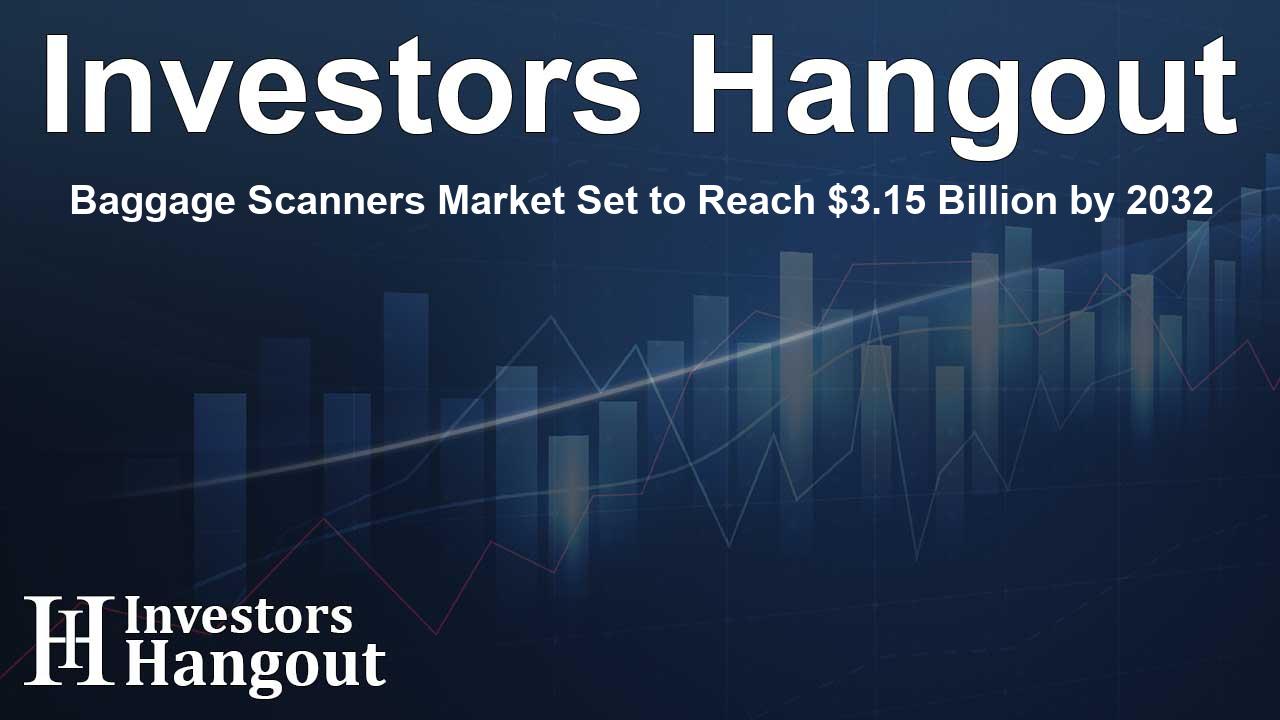Baggage Scanners Market Set to Reach $3.15 Billion by 2032

Overview of the Baggage Scanners Market Growth
The baggage scanners market is witnessing significant expansion, fueled by growing concerns over security and advancements in technology. The current valuation of the market is USD 2.14 billion, projected to soar to USD 3.15 billion by 2032, maintaining a compound annual growth rate (CAGR) of 4.15% from 2024 to 2032.
Factors Driving Demand for Baggage Scanners
Rising safety concerns across various sectors, such as airports, railway stations, and educational institutions, have catalyzed the demand for baggage scanners. These scanning systems utilize innovative color-coded imaging technologies that help identify potential threats effectively. Significant government initiatives aimed at enhancing public infrastructure play a pivotal role in promoting investment in security technologies, making it a crucial period for this market segment.
Government Regulations Impacting the Industry
Strict government regulations regarding safety measures have led to a notable surge in demand for modern baggage scanning technologies. Organizations like the Transportation Security Administration (TSA) and the European Union Aviation Safety Agency (EASA) have raised the bar for security, advocating for the implementation of explosives detection systems and advanced imaging technologies. With increased funding, such as the USD 7.4 billion allocated to transportation security, agencies are now equipped to enhance security measures at entry points significantly.
Market Segment Insights
Mature Market and Player Dynamics
The baggage scanner market is currently dominated by baggage handling systems, which hold an 87.7% market share. Key players in the industry, such as KritiKal Securescan, Protective Technologies, and Smith Detection, develop diverse products, including X-ray inspection systems and explosive trace detection systems. This array of advanced solutions caters to the elevated demands for security across various themes.
Innovations in Baggage Scanning Technology
The advancement of X-ray scanners, boasting rapid growth rates of 5.72% through 2032, demonstrates the shift towards optimizing security protocols. Enhanced imaging capabilities—empowered by Artificial Intelligence (AI) and high-resolution imaging—are essential in satisfying the stringent safety requirements of modern transportation. The adoption of Radio-Frequency Identification (RFID) technologies, which hold a 56% market share, offers a solution to improve luggage tracking effectively, thus augmenting operational efficacy and customer satisfaction.
Regional Analysis of the Market
North America and Europe continue to lead the baggage scanner market, primarily driven by stringent public safety laws. North America alone captured approximately 34% of the market as of 2023, reinforcing the necessity for mandatory baggage scanners, especially in U.S. airports. However, the Asia Pacific is poised for considerable growth, anticipated to expand at a remarkable CAGR of 6.34% due to escalating security concerns and increasing investments in airport infrastructures.
Future Trends in Airport Security
With heightened demand for air travel expected to exceed 4.5 billion passengers by 2025, airports are investing heavily in next-generation security systems. Countries like India, China, and Japan are witnessing robust initiatives in airport construction and technology upgrades, further driving the expansion and modernization of baggage-handling capabilities to respond to shifting security landscapes. Recent product launches from companies like Smiths Detection and Micro-X reflect an industry racing to enhance scanning and detection capabilities.
Frequently Asked Questions
What is the expected growth of the baggage scanners market?
The baggage scanners market is forecasted to grow from USD 2.14 billion in 2023 to USD 3.15 billion by 2032, with a CAGR of 4.15%.
Which regions are leading in the baggage scanner market?
North America and Europe are currently leading the market, while the Asia Pacific region anticipates strong growth driven by security concerns and investment in airport infrastructure.
What technologies are driving baggage scanner innovations?
Technologies such as X-ray imaging, RFID systems, and AI integration are advancing baggage scanning innovations, improving accuracy and efficiency in threat detection.
How do government regulations affect the baggage scanner market?
Government regulations enhance the demand for advanced scanning technologies by enforcing stringent safety measures, especially in transportation hubs.
Which companies dominate the baggage scanner market?
Key players in the market include KritiKal Securescan, Smith Detection, and Protective Technologies, offering a range of products to meet security needs.
About Investors Hangout
Investors Hangout is a leading online stock forum for financial discussion and learning, offering a wide range of free tools and resources. It draws in traders of all levels, who exchange market knowledge, investigate trading tactics, and keep an eye on industry developments in real time. Featuring financial articles, stock message boards, quotes, charts, company profiles, and live news updates. Through cooperative learning and a wealth of informational resources, it helps users from novices creating their first portfolios to experts honing their techniques. Join Investors Hangout today: https://investorshangout.com/
Disclaimer: The content of this article is solely for general informational purposes only; it does not represent legal, financial, or investment advice. Investors Hangout does not offer financial advice; the author is not a licensed financial advisor. Consult a qualified advisor before making any financial or investment decisions based on this article. The author's interpretation of publicly available data shapes the opinions presented here; as a result, they should not be taken as advice to purchase, sell, or hold any securities mentioned or any other investments. The author does not guarantee the accuracy, completeness, or timeliness of any material, providing it "as is." Information and market conditions may change; past performance is not indicative of future outcomes. If any of the material offered here is inaccurate, please contact us for corrections.